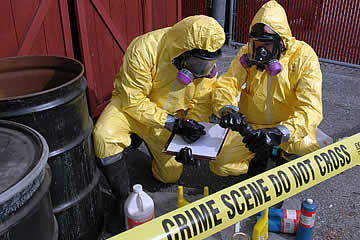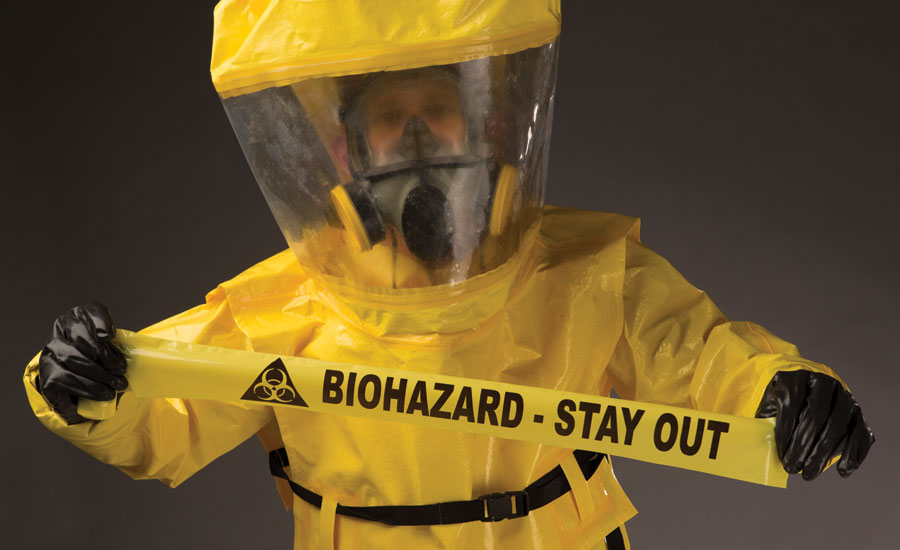Precise ATP Testing for Effective Hygiene and Hygiene Surveillance
Precise ATP Testing for Effective Hygiene and Hygiene Surveillance
Blog Article
Expert Biohazard Cleaning and Decontamination for Blood, Bodily Fluids, and Hazardous Products
The possible health and wellness risks linked with direct exposure to biohazards highlight the vital need for precise handling and complete cleaning. As we navigate the complex landscape of biohazard cleanup, recognizing the nuances of laws, compliance, and the specific tools at play ends up being vital in guaranteeing a detailed and safe decontamination procedure.
Health Threats of Biohazard Exposure
Exposure to biohazards presents considerable health and wellness dangers that can result in serious effects for people and areas alike. Biohazards include a large range of organic compounds, including blood, physical fluids, mold and mildew, bacteria, infections, and other potentially transmittable materials. When individuals come right into call with these biohazards, whether with accidents, improper handling, or environmental direct exposure, they deal with the danger of contracting serious diseases or conditions.
One of the primary health risks connected with biohazard direct exposure is the transmission of transmittable diseases. Bloodborne virus such as HIV, hepatitis B and C, and different microorganisms can be existing in biohazardous materials, positioning a direct danger to human health. Inhaling air-borne biohazards like mold and mildew spores or entering call with contaminated surfaces can likewise lead to breathing concerns, allergies, and other unfavorable wellness impacts.
Furthermore, biohazard direct exposure can have long-term wellness ramifications, with some diseases manifesting years after the initial contact (Blood Cleanup). Therefore, it is crucial to prioritize appropriate biohazard cleaning and decontamination to reduce these wellness dangers and ensure the safety of communities and people

Specialized Educating for Biohazard Cleanup
When it comes to dealing with biohazard clean-up efficiently and safely, specialized training plays a basic duty in making sure correct decontamination procedures are followed. Biohazard cleaning requires certain expertise and abilities to properly reduce threats connected with bloodborne pathogens, bodily liquids, and hazardous materials. Experts learnt biohazard cleaning undertake strenuous guideline on how to safely manage, get rid of, and throw away biohazardous materials to stop contamination and exposure.
Specialized training for biohazard cleanup covers a variety of crucial topics, including correct individual protective equipment (PPE) usage, bloodborne virus awareness, purification strategies, and contaminated materials disposal procedures. People learnt biohazard cleanup are furnished with the needed experience to evaluate contamination levels, determine possible threats, and apply appropriate clean-up treatments in compliance with regulative standards.
Continuous training and education and learning are paramount in the area of biohazard clean-up to remain updated on the most up to date decontamination technologies, safety and security methods, and policies. By buying specialized training, biohazard clean-up specialists can effectively respond to emergency cleaning situations and secure both public health and wellness and the environment.
Relevance of Proper Decontamination Methods
Utilizing appropriate decontamination strategies is critical in biohazard cleaning to efficiently eliminate harmful products and lessen health dangers. Efficient decontamination not only makes sure the removal of visible traces of blood, bodily fluids, and other biohazards but likewise targets unnoticeable virus that may his response present severe wellness threats otherwise appropriately eradicated. By complying with rigorous decontamination methods, trained experts can dramatically reduce the danger of exposure to harmful microorganisms, viruses, and germs that might lead to infections or conditions.
Appropriate purification strategies entail using specific devices and anti-bacterials that are especially designed to neutralize biohazards successfully. Complete cleansing and disinfection of infected areas are necessary to avoid the spread of pathogens and make certain a safe atmosphere for residents. Additionally, the correct disposal of biohazardous waste complying with purification procedures is more essential in preventing contamination of various other surfaces or people.

Equipment and Tools for Safe Clean-up
The proper equipment and devices play an essential role in guaranteeing the safe and reliable cleanup of biohazardous materials. When managing blood, bodily fluids, or hazardous materials, biohazard cleaning specialists rely upon specialized equipment to reduce direct exposure dangers and completely sanitize the affected area. Individual protective equipment (PPE) such as gloves, masks, coveralls, and safety glasses are important to secure against direct contact with potentially infectious products. Furthermore, biohazard cleaning sets containing anti-bacterials, absorbent materials, and biohazard bags are made use of to safely consist of and get rid of of infected items. Blood Cleanup.
Advanced cleaning tools like hospital-grade disinfectants, HEPA-filtered vacuums, and misting devices are used to sanitize surfaces and remove biohazards successfully. Specialized tools such as sharps containers and biohazard waste disposal containers are used to safely manage sharp items and biohazardous waste materials. By utilizing the appropriate equipment and devices, biohazard cleaning professionals can ensure a detailed clean-up process that focuses on safety and reduces health dangers for both employees and occupants of the afflicted area.
Regulations and Compliance in Biohazard Cleaning
Proper adherence to policies and compliance requirements is extremely important in biohazard cleansing to make sure the security of both workers and the atmosphere. Federal government firms such as OSHA (Occupational Safety and Wellness Administration) and the EPA (Epa) have actually established particular standards for biohazard clean-up treatments to reduce health dangers and environmental contamination. These policies cover a variety of aspects including the handling, transport, and disposal of biohazardous materials, as well as the essential training and safety equipment required for personnel involved in the cleanup procedure.
Biohazard cleansing business should remain updated with these policies to assure that their operations satisfy the required security standards. Failure to follow these guidelines can result in extreme effects, including fines, lawful activity, and endangering the health and wellness of individuals and the atmosphere. By complying with stringent regulations and compliance procedures, biohazard cleaning business can properly image source reduce risks and make certain a safe and complete clean-up process for all celebrations involved.
Verdict
To conclude, biohazard cleaning and decontamination call for specific training, appropriate strategies, and adherence to policies. Exposure to blood, physical fluids, and harmful products positions considerable health and wellness threats, making it crucial to make use of the right equipment and tools for risk-free cleaning. By following strict procedures and guidelines, professionals can successfully alleviate the risks related to biohazard exposure and ensure the safety and security of both themselves and others.
As we browse the intricate landscape of biohazard cleanup, understanding the nuances of policies, conformity, and the customized tools at play ends up being crucial in making certain a comprehensive and safe decontamination process. (Blood Cleanup)
When it comes to dealing with biohazard cleanup successfully and securely, specialized training plays a fundamental role in ensuring correct purification procedures are followed.Utilizing correct decontamination strategies is critical in biohazard cleaning to properly lessen and get rid of unsafe products wellness dangers. Furthermore, biohazard cleansing kits having anti-bacterials, absorptive materials, and biohazard bags are utilized to safely dispose and consist of of polluted things.
Federal government companies such as OSHA (Occupational Security and Wellness Management) and the EPA (Environmental Defense Company) have developed certain guidelines for biohazard cleaning procedures to lessen wellness risks and ecological contamination.
Report this page